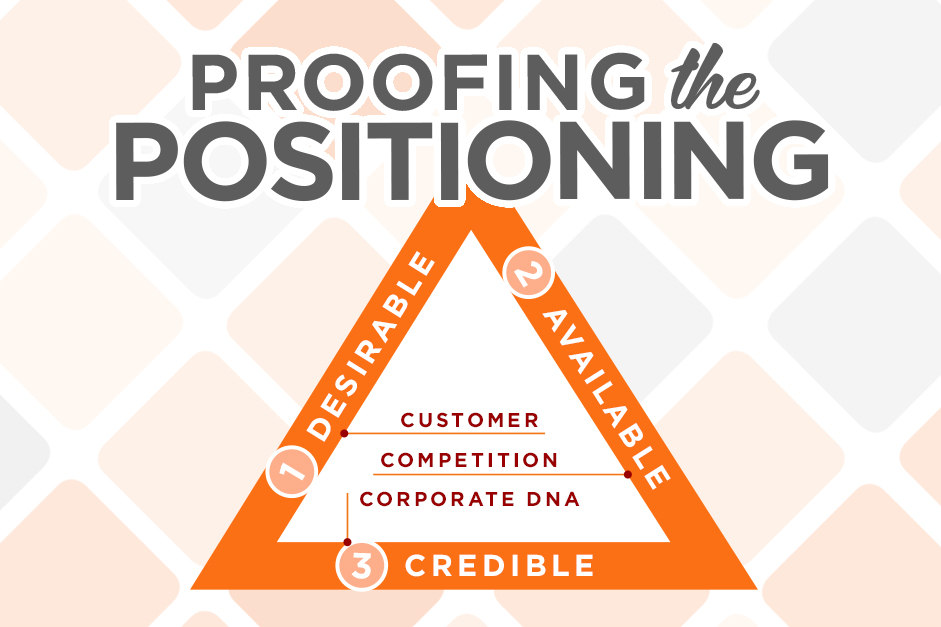Do you ever feel like you’re throwing a wad of spaghetti against the wall and hoping some will stick?
That is no way to win in the marketplace.
The business with the right strategy and the commitment to carry it out inevitably will win.
When the concept of positioning was introduced nearly 50 years ago, the level of competition was more like a tea party compared to today’s fierce marketplace. It truly is a battleground. Winning has become a whole lot tougher. It's vital to find your brand positioning.
Positioning is about how you are different from the competition. In a highly competitive market, you must give customers a persuasive reason to buy your brand. You must present a customer-focused value proposition.
Philip Kotler is one of the world’s leading authorities on marketing. The S.C. Johnson & Son Distinguished Professor at the Kellogg School of Management at Northwestern University, Kotler defines positioning as the “act of designing the company’s product/service and image to occupy a distinctive place in the mind of the prospect/customer.”
So how do you find that place, find your brand positioning?
Positioning is not about creating something new. Rather, it is about manipulating what already is in the mind of your customers and prospects by retying existing connections.
The quest to find your position begins with understanding what your customer or prospect values. “Customer” is the first of the three Cs filter test for finding your brand’s positioning idea.
The most successful marketers have deep insights into what resonates with their customers. If the positioning idea is not meaningful to your customer, nothing else matters much.
Consider Amazon’s obsession with its customers.
When Jeff Bezos attends an internal meeting, he insists on having at least one empty chair in the room. That empty chair represents the customer. During meetings, he will point at the chair to remind people what their primary focus needs to be.
We all need to be customer-focused companies. Understanding your customer gives you a significant advantage over your competition.
One way to gain that advantage is to listen to your customers and prospects through focus groups and surveys conducted by an outside research firm. They know how to get what you need to know.
Many in marketing are using what has become known as the customer, or buyer, persona.
Your brand has only one persona, which is based on its position. But your brand’s customers can be segmented, each one represented by a different persona. Some brands only have one customer persona. Others have several.
The second C in the three Cs filter test stands for the competition. Positioning is always relative to (or against) the positioning of the competitive brands. Remember, it’s about differentiating your brand from the competition.
Again, a little research is important. While you are researching your customers and prospects, include questions about the competition. You need to find out what position your competition already owns in the minds of your customers and prospects. If the position is owned by a competitor, it might not be available for your brand.
The third and final C in the filter test stands for your own company. The chosen position must match the customer perception of your brand. It should be believable and ownable.
It should fit with your company’s “why,” the reason for being in business beyond making money. It should be something your company is passionate about and align with your core values, competencies and beliefs.
Through the 3Cs filter test, a positioning idea should rise to the top. The goal is to find the position that is most relevant to your customers, not owned by your competition and that aligns with your company’s DNA.
When you find it, you’re ready to write your positioning statement.
Here is the framework for turning the positioning idea into a statement that will convince your core customer to prefer your brand over your competition:
• For (target customer)
• Who (statement of need, concern, desire or opportunity)
• (Brand name) is a (brand category)
• That (key benefit)
• Unlike (competing alternative)
• (Brand) (statement of primary differentiation)
Here’s an example using Amazon’s early positioning statement:
• For (World Wide Web users)
• Who (enjoy books)
• (Amazon) is a (retail bookseller)
• That (provides instant access to over 1 million books)
• Unlike (traditional bookstores)
• (Amazon) provides a (combination of extraordinary convenience, low prices and comprehensive selection)
Your business deserves the time and resources it will take to find your brand positioning. Once found, it will be prescriptive for decision-making throughout the organization and help you to win in the marketplace.



